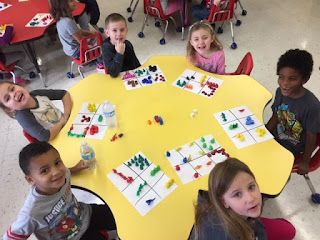“Once
you stop learning, you start dying.”
--
Albert Einstein
By
Tommie Saylor
Kennedy
High School Principal
In
the field of education we spend a lot of time talking about two of the three
aspects of good teaching, but we seem to place little emphasis on what I
consider to be perhaps the most important part of the trilogy, at least from a
student’s perspective. It’s called presentation. Let’s review the three.
The
first part of the educational trilogy is the content. Teachers learn
their content in college, through years of practice and practical application
while on the job (experience), and through seminars and conferences guided by
State Standards and learning objectives.
Content
is often referred to curriculum and trust me when I tell you that after years
of teachers having to maintain certifications and Highly Qualified status, teachers
know their curriculums inside and out.
The
second part of the educational trilogy is technique and/or teaching
methodology. This is where renowned educational researchers spend most of
their time.
Such
people like Robert Marzano who talks about the science behind teaching, how our
brains learn and the step-by-step approach where if you want “X” results, you
need to utilize methods “A”, “B”, and “C”. People like Madeline Hunter
(my personal favorite) talk about the art of teaching; about processes that
inspire and delight students into learning; and about how to draw students into
the lesson, making them part of the lesson as opposed to just observers of the lesson.
It’s
also people like Richard DuFour, who talks about creating Learning Communities
and advocates for professional collaboration and views teaching as a continuous
process of teaching lessons, reviewing data and making adjustments based upon
the data. The second part of the educational trilogy is well researched,
well implemented in today’s schools, is the subject of countless professional
development seminars, and as stated above, almost every educator knows these
names and processes inside and out.
Finally,
the third part of the educational trilogy, the part that as previously stated
may very well be the most important part, is the presentation.
It
is through the instructor’s presentation of the lesson that the teacher can
demonstrate their passion for teaching, their love for learning, and able to
build a rapport with their students. It is through the presentation that
the instructor can become imaginative, witty, entertaining and create not just
lessons, but learning experiences.
 |
| Dave Burgess |
The
book “Teach Like A Pirate,” authored by Mr. Dave Burgess, a long time teacher
from San Diego who taught mostly “at risk” students on the edge of dropping out,
is a must read.
In
Mr. Burgess’s book he addresses the third part of the educational trilogy, proclaiming
that the better entertainer you are, the more effective teacher you
become.
Mr.
Burgess talks about using time honored marketing skills to “sell” your product
and draw students to you. He talks about making your classroom a place where
students want to go, as opposed to being a place where they have to go.
Being
a Social Studies teacher, Mr. Burgess talks about dressing up in a pin-striped
suit when he covers prohibition and the days of “speak-easies”; dressing up in
a “poodle skirt” as a young lady in the 1950s when he covers post war America; and
taking the students on a nature walk when he teaches the “trail of
tears”.
Mr.
Burgess advocates for using music in class when it will help to drive home a
point; in showmanship almost to the point of silliness to create educational
experiences; and not just presenting lessons that have to be endured.
“Don’t
just create lessons, create an experience,” he said.
This
falls in line with a quote that many educators may know, but seldom remember:
“They
may forget what you said, but they will never forget how you made them feel.”
Mr.
Burgess promotes making students feel the lesson, not just hear and see it. I
know that many educators may believe that this is hard to do, that is takes a
great deal of work and a great deal of creativity that they may not possess. But
teaching not supposed to be easy, it’s supposed to be worth it, it’s supposed
to be rewarding.
Students
come to school because they have no choice. Imagine what it would be like
if school was not mandatory. If students could choose freely if they wanted to
attend school or not, and had the freedom to pick what classes they
attend.
If
this were the case, would you be teaching to an empty room?
Perhaps
we should consider making some changes that draw students to us, to the
classroom, that makes students want to learn, and excited to be involved.
Helping
students to find their greatness. Making Kennedy the school of choice.
Excellence by design.
















































